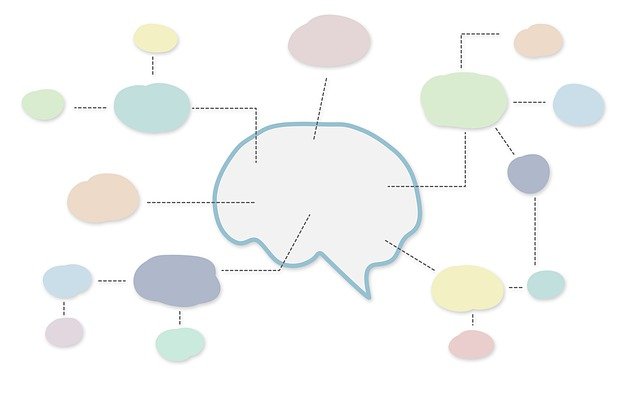Writing out your thoughts, is always a great idea. The idea of mind mapping is to take it a step further by organizing your thoughts into layered steps. In mind maps we see branches of thought and you could use a pear tree a very simple example of a mind map. In spring time, you start with a bare tree, than add leaves, then flowers and finally small fruit that with water and sunshine develops into a full pear which you can then devour.
In mind mapping, typically you begin with a central topic, “your bare tree.” Add in branches of ideas that are related to your central topic. You aren’t done yet, because in mind mapping, you need to go back to each branch and add in smaller branches to the larger. These are sub-related topics.
Mind mapping is how you can take a problem or even an idea you have such as a novel or a new home based business and come up with inventive solutions or ideas.
You can do your mind maps on paper or use specialized software. No matter what you use, it is done the same way. Start with your central idea and make it clear and concise. It could be write a 60,000 word novel for example. By adding branches to your central idea, you can get down all the steps you need to accomplish this dream. Rather than winging it, you have the central idea, the big steps and the sub-steps to keep you on the right path.

As this may be your first time doing a mind map, try doing it with pen and paper. This practise run will show you how your mind puts out ideas and how you translate it to paper.
Use a large piece of white art paper or even a nice large piece of cardboard, that you can use a red marker on. As your central idea and the branches, sub-branches get added, you would likely run out of room on a legal size piece of paper. Of course when you start using mind mapping software, that won’t be an issue.
Okay, now that you have your central idea, what is your first branch? Here, you decide the most important first step. For a novel, is it your lead characters name or for a business, is it the product or service you will provide?
Draw a line from the central idea to a newly created round or square box and put your topic in there for the first branch. From there, draw in the lines and the sub-branch shapes that you need and proceed to fill them in.
Building out your branches, forces your brain to come up with creative ideas and to visually ask questions like, “what if I do this, or how will I do that?” As your brain processes the answers, you decide in what portion of the mind map they belong.
Your sub-branches play a vital part as you build your mind map. When you look at a branch, you ask yourself what thoughts come to your mind. These get added as your sub-branches. Looking at the sub-branches, you begin to see if there is any relationship to other sub-branches, so you can tie them together. There is no limit on sub-branches, so in the case of writing a novel, you may have a branch with 6-8 sub-branches to cover all the things that are required for writing.
Like a tree, you are adding as many branches and sub-branches as you need to fully flesh out your mind map.
This method of mind mapping is quite structured. However for some people, that may not work and they will need to use “free flow,” mind mapping where they add information as it comes into their mind.
As we used novel writing as example, let’s stay with it in terms of structure and free flow, so that it is totally understood. Many writers need a fully outlined and plotted book idea that they follow from start to finish. There are people who cannot follow that structure and they write “by the seat of their pants and are referred to as pantsers.” Prolific author Stephen King is a pantser and does not plot his novels as some may think.
Decide how you need to approach mind mapping and create your first one today.





